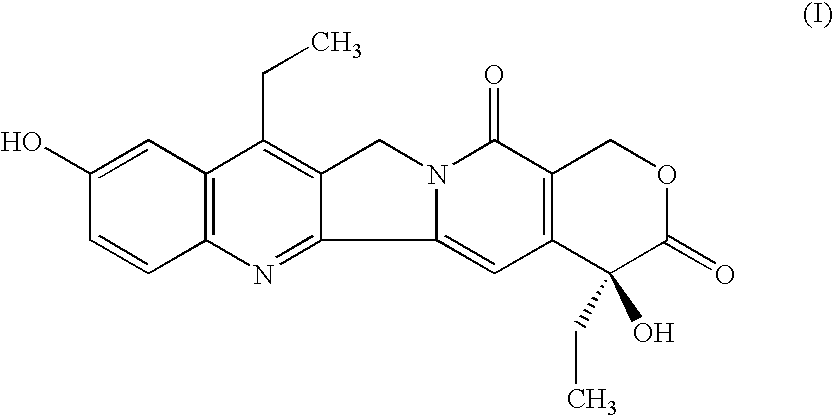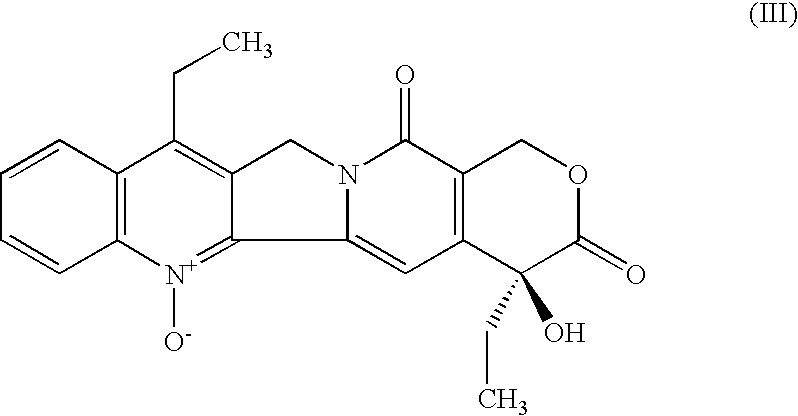Method of manufacturing of 7-ethyl-10-hydroxycamptotecin
a manufacturing method and technology of 7-ethyl-10-hydroxycamptothecin, which are applied in the directions of biocide, heterocyclic compound active ingredients, drug compositions, etc., can solve the problems of demanding isolation procedure and affect the yield of 7-ethylcamptothecin 1-oxide, and achieve the effect of improving the yield of 7-ethylcamptothecin
- Summary
- Abstract
- Description
- Claims
- Application Information
AI Technical Summary
Benefits of technology
Problems solved by technology
Method used
Image
Examples
example 1
[0017] In a 100 ml beaker, 0.5 g (1.239 mmol) of 7-ethylcamptothecin, 0.32 g of 5% hydrogenation catalyst Pt / C (containing 0.028 mmol of platinum) and 0.025 ml (0.352 mmol) of dimethyl sulfoxide are added to 70 ml of acetic acid. The obtained suspension is quantitatively transferred into a 100 ml autoclave. After closure, the autoclave is flushed three times with nitrogen at the pressure of 0.5 MPa and then three times with hydrogen at the pressure of 0.5 MPa. The temperature is adjusted to 65° C. and the mixture is stirred at 950 r.p.m. The hydrogen pressure is adjusted to 0.5 MPa. After 43.5 hours the consumption of hydrogen stops and the procedure is terminated. After cooling to 25° C., the stirring is stopped and the internal pressure is equilibrated with the ambient atmosphere. The autoclave is flushed three times with nitrogen, the hydrogenation catalyst is removed from the hydrogenation mixture by filtration under pressure of nitrogen and the catalyst cake is washed with 10 m...
PUM
| Property | Measurement | Unit |
|---|---|---|
| Temperature | aaaaa | aaaaa |
| Temperature | aaaaa | aaaaa |
| Temperature | aaaaa | aaaaa |
Abstract
Description
Claims
Application Information
 Login to View More
Login to View More - R&D
- Intellectual Property
- Life Sciences
- Materials
- Tech Scout
- Unparalleled Data Quality
- Higher Quality Content
- 60% Fewer Hallucinations
Browse by: Latest US Patents, China's latest patents, Technical Efficacy Thesaurus, Application Domain, Technology Topic, Popular Technical Reports.
© 2025 PatSnap. All rights reserved.Legal|Privacy policy|Modern Slavery Act Transparency Statement|Sitemap|About US| Contact US: help@patsnap.com



